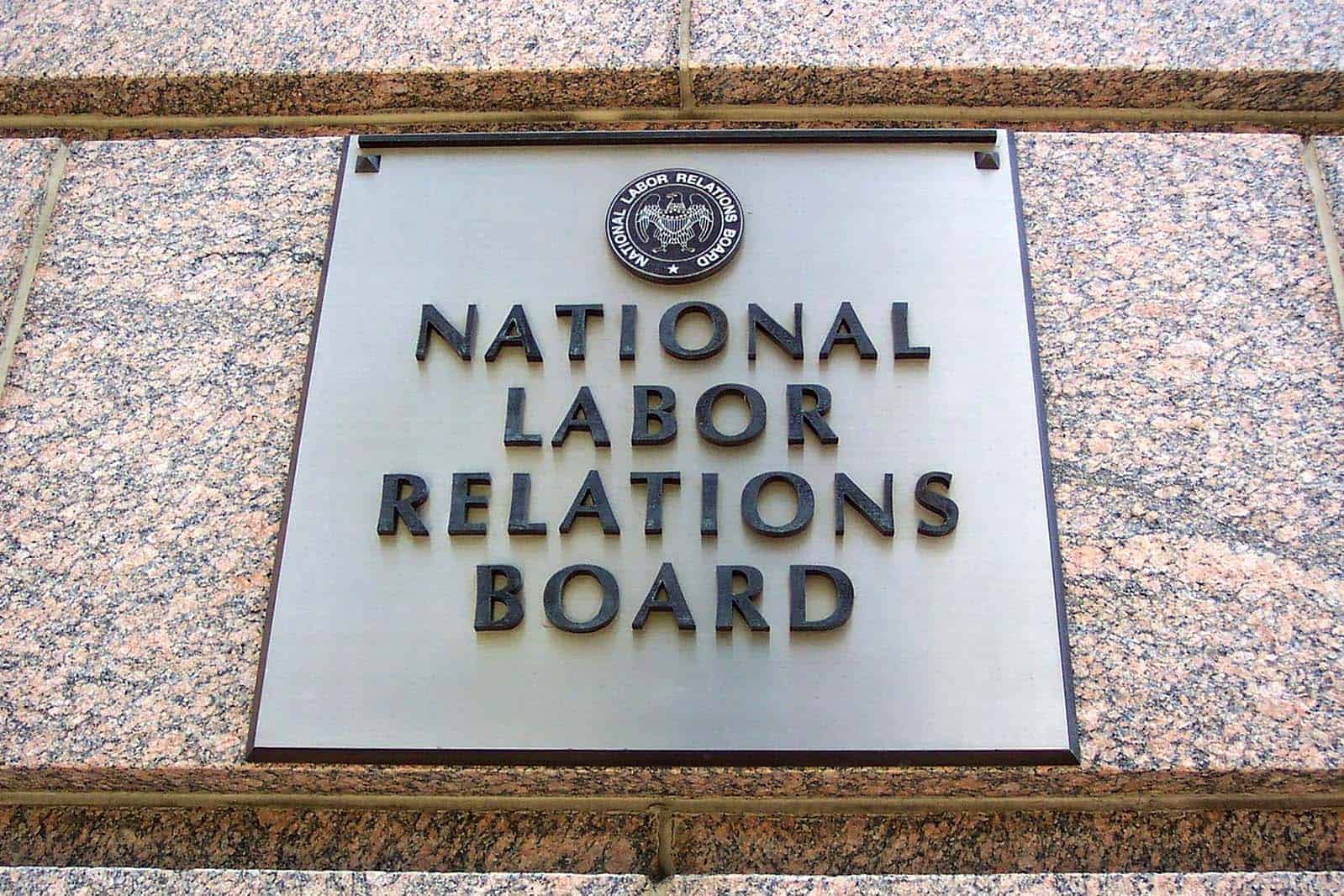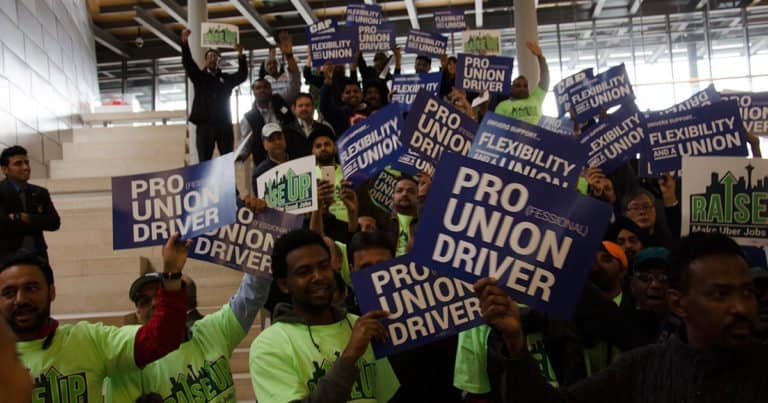
Andrew Strom is a union lawyer based in New York City. He is also an adjunct professor at Brooklyn Law School.
In American Steel Construction, the National Labor Relations Board will once again decide how much it will tolerate employer litigation over bargaining units as an antiunion weapon. The National Labor Relations Act was supposed to give workers a voice in governing their workplaces, but only six percent of private-sector workers in this country have the right to bargain with their employer that comes with union representation. It’s as though only 26 of the 435 Congressional districts had an elected representative. One reason for this lack of representation is that — in contrast to electing a representative to Congress — if workers want to organize, they first have to fight with their boss regarding the contours of their bargaining unit — imagine an insurgent running for office in Houston only to find out her district includes the entire State of Texas.
The NLRA provides that the NLRB “shall decide in each case whether, in order to assure to employees the fullest freedom in exercising the rights guaranteed by this Act, the unit appropriate for the purposes of collective bargaining shall be the employer unit, craft unit, plant unit, or subdivision thereof.” A unanimous Supreme Court held that the phrase “in each case” does not preclude the Board from adopting rules and presumptions that guide bargaining-unit determinations. To decide whether a group of workers has a sufficient “community of interest” to make a bargaining unit “appropriate,” the NLRB has developed a multifactor test that asks whether the workers:
- (1) are organized into a separate department;
- (2) have distinct skills and training;
- (3) have distinct job functions and perform distinct work;
- (4) are functionally integrated with other employees;
- (5) have frequent contact with other employees;
- (6) interchange with other employees;
- (7) have distinct terms and conditions of employment; and
- (8) are separately supervised.
The Board has not laid down clear rules for how to weigh these factors. What makes a job function or work distinct? When 60 poker dealers at a casino sought to organize separately from 180 craps, roulette, and blackjack dealers, the Board rejected the smaller unit based on a determination that “all dealers perform the same basic function, that is, operating various wagering games for customers.” But, if you define function that broadly, everyone who works at a hospital could be said to perform the function of caring for patients. Even when the Board has defined function more narrowly, it has not established a clear rule for how much overlap of functions is necessary to militate against a community of interest finding.
The same is true for interchange — Board decisions have turned on whether interchange between groups of employees is “occasional” or “regular” without any clearly articulated standard for where to draw the line. One factor, separate supervision, seems like a bright line, but the Board has discounted separate supervision where the frontline supervisor has limited authority. The Board also has never said how many of the factors must support a community-of-interest finding before it will find the proposed unit appropriate.
When a union files for an election to represent a group of workers, the union proposes a bargaining unit. If the union has done its homework, a majority of workers in the proposed bargaining unit favor unionization. So, the typical antiunion employer responds by arguing that the smallest appropriate unit must include an additional number of antiunion workers sufficient to defeat the unionization drive. In 2011, in Specialty Healthcare, the Board clarified the test for cases when an employer proposes that an otherwise appropriate unit must include an additional group of workers. Borrowing the formulation of a panel of three Republican appointees on the D.C. Circuit, the Board announced that it would add another group of workers to a readily identifiable group of workers who share a community of interest only if the additional group shares an “overwhelming” community of interest with the proposed unit.
The employer lobby predictably responded to the Obama Board ruling by pretending that the sky was falling. In their desperation to create a circuit split that would allow the Supreme Court to overrule the NLRB, employers tried their luck in eight separate circuit courts — and each time the court of appeals ruled that the Board had not changed the law, but had simply clarified the existing standard. Nevertheless, just months after Donald Trump’s first two appointees to the Board took office, the NLRB issued a decision in PCC Structurals, overruling Specialty Healthcare. Then, in The Boeing Company, Trump’s appointees went even further, and held that a group of 178 licensed technicians who worked in a separate building from other employees, who had separate supervision, and who were paid significantly more than other employees could unionize only as part of a unit of all 2,700 production and maintenance workers at a Boeing complex.
Now, in American Steel Constructing, the Biden Board seems likely to revert back to Specialty Healthcare, in large part because the arguments in favor of retaining the Trump Board’s standard are incoherent. In Boeing, the Trump Board announced that it would consider whether “excluded employees have meaningfully distinct interests in the context of collective bargaining that outweigh the similarities with unit members.” Needless to say, the Trump appointees never explained how this weighing would work since the factors do not lend themselves to mathematical formulas. In Boeing, then-Board Member McFerran found that six of the eight community-of-interest factors weighed in favor of the petitioner’s proposed unit, yet somehow the Board majority found that the interests the licensed technicians shared with excluded employees were “far more significant than those that differentiate them.”
A return to Specialty Healthcare would make it harder for employers to insist on larger bargaining units as a tactic to defeat organizing drives, but far more is needed to fully protect the right to organize. As long as the appropriateness of a bargaining unit is based on a murky eight-factor test, employers will always be able to find a nonfrivolous basis for challenging the Board’s determination. Even at risk of being overruled by hostile judges, the Board should lay down some clear rules. If an employer divides workers up into different classifications, then workers should be able to organize along those classification lines. And, workers should be able to combine multiple classifications into a single bargaining unit. If workers who are excluded from the unit want to organize later, they can do so. And, if employers respond to the new rule by lumping workers who perform different functions into a single classification, the Board should look beyond job titles to allow all workers who perform the same function to organize separately.
The Board also needs to develop more meaningful remedies when an employer challenges a unit determination by refusing to bargain. Currently, the only remedy for an employer’s refusal to acknowledge a union’s election victory is a prospective order to bargain, so an employer can delay negotiations by two years or more just by exhausting its appeals. To go back to a political analogy, it’s as if Donald Trump’s meritless legal challenges to the election meant that Joe Biden would still be waiting to start his Presidency.









Daily News & Commentary
Start your day with our roundup of the latest labor developments. See all
October 15
An interview with former NLRB chairman; Supreme Court denies cert in Southern California hotel case
October 14
Census Bureau layoffs, Amazon holiday hiring, and the final settlement in a meat producer wage-fixing lawsuit.
October 13
Texas hotel workers ratify a contract; Pope Leo visits labor leaders; Kaiser lays off over two hundred workers.
October 12
The Trump Administration fires thousands of federal workers; AFGE files a supplemental motion to pause the Administration’s mass firings; Democratic legislators harden their resolve during the government shutdown.
October 10
California bans algorithmic price-fixing; New York City Council passes pay transparency bills; and FEMA questions staff who signed a whistleblowing letter.
October 9
Equity and the Broadway League resume talks amid a looming strike; federal judge lets alcoholism ADA suit proceed; Philadelphia agrees to pay $40,000 to resolve a First Amendment retaliation case.